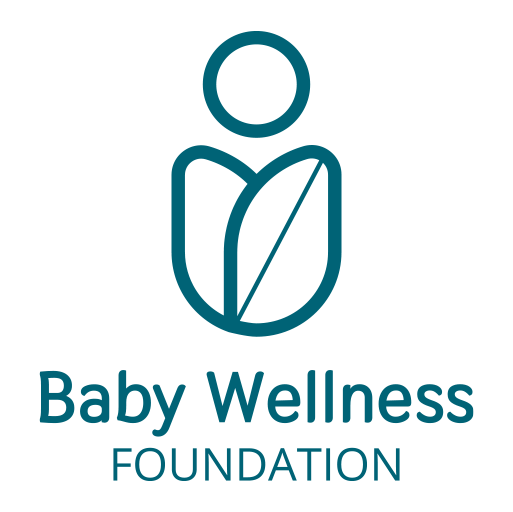Approfondimenti scientifici
Nipple biting during breastfeeding: the impact of nipple biting on feeding effectiveness, clinical perspectives
Nipple biting by the newborn during breastfeeding is a behavior that often generates concern, pain, and difficulties in the mother–infant dyadic relationship. Although considered a frequent event, especially in some developmental phases, it represents a multifactorial behavior that requires an in-depth analysis from a neurophysiological, behavioral, sensory, and relational point of view.
The newborn is born with a series of primitive oral reflexes—including sucking, rooting, and biting—that ensure survival and the beginning of feeding. During the first months of life, mouth movements are mainly reflexive and poorly differentiated. However, over time, the neuromotor system becomes more complex and mature.

Causes of nipple biting
Nipple biting may be associated with:
- reflex hyperactivity (e.g., persistent bite reflex);
- immature coordination between sucking–swallowing–breathing;
- immaturity of cortical inhibitory control, which physiologically emerges only after the first months of life;
- disturbed oral sensory experience (hypersensitivity or hyposensitivity);
- teething transition: the appearance of the first teeth between 4 and 7 months can increase the likelihood of biting.
Sensory factors and invasive precedents
Nipple biting can have multiple origins. Some newborns present altered sensory modulation in the orofacial area, which can lead to atypical reactions to the tactile stimulus of the nipple in the mouth. In these cases, biting may represent a defensive or self-regulatory response, especially in newborns with previous invasive experiences (e.g., nasogastric tube, forced non-nutritive sucking).
Breast latch and oral biomechanics
A superficial, incorrect, or unstable latch of the newborn to the breast can lead to ineffective sucking and the need to “anchor” with the jaw, causing involuntary micro-bites. This is particularly evident in newborns with tonic disorganization, mandibular tensions, or lingual motor dysfunctions. The appearance of the first incisors can cause itching, gingival discomfort, and the need to exert chewing pressure, even during sucking. In this case, biting is a physiological expression of an emerging oral need.
Non-verbal communication
In older infants (over 6 months), biting can also be a form of non-verbal communication: the infant may bite to attract attention, signal satiety, frustration, tiredness, or to explore new ways of interacting with the breast and the mother.
Neuroanatomical basis of the orofacial area
The orofacial area is a region of very high receptor density, innervated by several cranial nerves that convey sensory and motor information:
- Trigeminal nerve (V): main afferent pathway for tactile and proprioceptive sensitivity of the face, maxilla, and mandible;
- Facial nerve (VII): motor control of the mimetic muscles and upper/lower lip;
- Glossopharyngeal nerve (IX) and vagus nerve (X): involved in the regulation of the swallowing reflex and pharyngeal sensitivity;
- Hypoglossal nerve (XII): fine lingual motricity.
The interaction between these afferent and efferent pathways generates a complex neurosensory feedback system, which guides oral movements according to experience and cortical maturation.
Neurosensory integration and cortical control
In the first months, sucking is mediated by automatic subcortical patterns. Biting can represent a “motor programming error” when the maturation of the higher cortical pathways is not yet sufficient to inhibit reflexive or exploratory responses.
Clinical impacts
Biting can cause:
- skin lesions, intense pain, and bleeding;
- negative emotional reactions (fear, anxiety, anger);
- early interruption of breastfeeding, even in the presence of good milk production;
- psychologically, biting can compromise the mother’s confidence in the dyadic relationship, generating feelings of rejection or guilt.
It is therefore essential that healthcare professionals provide empathetic, evidence-based support, helping the mother to interpret the behavior and adopt appropriate strategies.
Observation of the dyad and maternal posture
An often underestimated cause of nipple biting is the mother’s posture during breastfeeding. A non-ergonomic position can induce musculoskeletal tensions, misplacement of the newborn, and latch instability, making the nipple more vulnerable to compressions or bites.
When the mother is in a state of postural contraction or muscular stress (e.g., raised shoulders, curved back, unsupported arms), the latch may also be compromised, leading the child to ineffective sucking, which can result in biting as compensation or reaction to difficulty.
Postural recommendations
The mother should adopt a relaxed and supported posture, which promotes:
- relaxation of the cervical and dorsal spine;
- alignment of pelvis and shoulder girdle;
- stable and reassuring eye contact;
- freedom of movement for the infant;
- optimal nipple positioning relative to the newborn’s mouth.
The use of ergonomic breastfeeding pillows and inclined footrests can significantly contribute to the mother’s well-being during feeding, preventing dysfunctional behaviors and favoring a deep and stable latch (Università degli Studi di Padova & Inglesina Baby, 2025. Unipd e Inglesina: insieme per il Baby Wellness. Ricerca scientifica e sviluppo di prodotti innovativi per il benessere del bambino).
Reading pre-bite signals
Biting is almost never sudden: it is often preceded by precise behavioral signals such as restlessness, slowing of sucking, and jaw clenching. Recognizing these signals allows the mother to gently interrupt feeding or to vary the position to rebalance the latch and reduce oral stress.
Biting can also be an expression of satiety or sensory overstimulation. Offering the breast when the infant is awake and motivated to suck (and not drowsy or distracted) reduces the likelihood of disorganized behaviors. Even overproduction of milk or too rapid a flow can induce oral discomfort and stimulate biting.
Nipple biting should not be interpreted as an aggressive or abnormal gesture, but as a multifactorial behavior reflecting the interaction of maturational, sensory, motor, postural, and emotional factors. A thorough understanding of this phenomenon requires an integrated neurobiological and relational reading, in which the child’s behavior is seen as an emerging body language, to be deciphered rather than repressed.
In this perspective, respecting the child’s rhythm, promoting a relaxing bodily environment, and enhancing prenatal bonding are essential conditions to support the quality of the dyadic relationship and the continuity of breastfeeding.
The therapeutic alliance between mother and healthcare professional thus becomes crucial to protect and promote serene, functional breastfeeding, guiding both protagonists toward an increasingly conscious, harmonious, and satisfying dynamic.
Orfeo, L., Agostoni, C., Staiano, A., & SIGENP, SIP, SIN (2022).
Complementary feeding in preterm infants: a position paper by Italian neonatal, paediatric and paediatric gastroenterology joint societies. The Italian Journal of Pediatrics
Kent, J. C., Prime, D. K., & Garbin, C. P. (2018). Principles for managing issues associated with infant suckling, breastfeeding, and nipple pain. Journal of Human Lactation
Amir, L. H., & Academy of Breastfeeding Medicine. (2019). ABM Clinical Protocol #1: Guidelines for glucose monitoring and management of hypoglycemia in breastfeeding neonates. Breastfeeding Medicine
Lau, C., Smith, E. O., & Schanler, R. J. (2019). Coordination of suck-swallow and swallow-respiration in preterm infants. Acta Paediatrica
West, D. L., & Turner, M. G. (2020). Effects of maternal posture on infant latch and breastfeeding outcomes: a systematic review. Maternal & Child Nutrition
Geddes, D. T., Kent, J. C., Mitoulas, L. R., & Hartmann, P. E. (2018). Tongue movement and intra-oral vacuum during breastfeeding suckling in term infants. Early Human Development
Walker, M., & Dain, E. (2018). Breastfeeding management for the clinician: using the evidence. Journal of Clinical Nursing
Ball, T. M., & Wright, A. L. (2020). Postural factors influencing breastfeeding efficiency: a clinical approach. Journal of Perinatal & Neonatal Nursing
Zhou, Q., Wang, Y., & Sun, G. (2021). Orofacial sensory-motor function and breastfeeding outcomes in infants: a narrative review. Frontiers in Pediatrics
Thoyre, S. M., Carlson, J., & Brown, L. S. (2019). Clinical management of oral feeding challenges in infants: an integrative review. Advances in Neonatal Care
